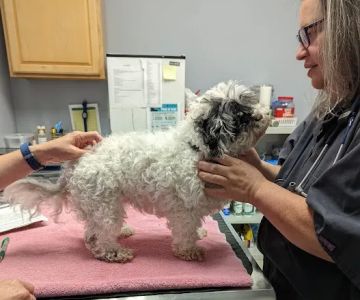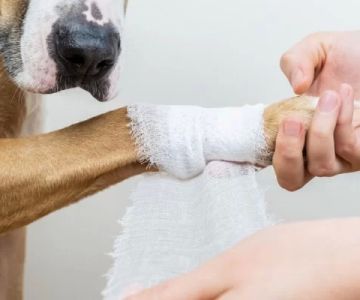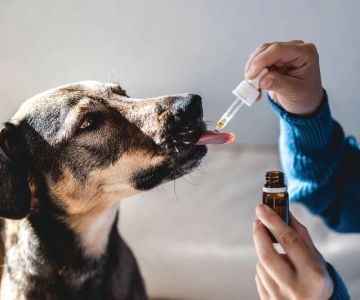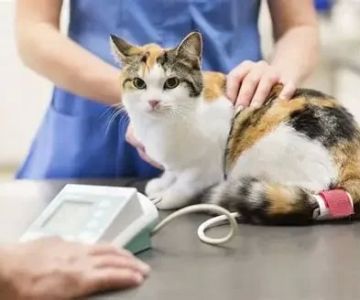How to Help Pets with Spinal Injury or Disc Disease
- 1. Understanding Spinal Injury and Disc Disease in Pets
- 2. Signs of Spinal Injury or Disc Disease in Pets
- 3. Treatment Options for Pets with Spinal Injury or Disc Disease
- 4. Providing Supportive Care for Pets with Back Issues
- 5. Real-Life Case Studies: Helping Pets with Spinal Injury
- 6. How Hidden Brook Veterinary Can Assist with Your Pet’s Spinal Health
1. Understanding Spinal Injury and Disc Disease in Pets
Spinal injuries and disc diseases are relatively common in pets, especially in dogs and cats. The spine plays a crucial role in your pet’s ability to move, balance, and even perform daily activities, so any injury or disease affecting it can significantly impact their quality of life. Spinal disc disease, also known as intervertebral disc disease (IVDD), occurs when the discs between the vertebrae in the spine degenerate or become displaced. This can lead to severe pain, limited mobility, and, in some cases, paralysis.
Spinal injuries, on the other hand, can result from trauma, such as accidents or falls, or degenerative conditions. Both spinal injuries and disc disease are more common in certain breeds, with dogs like Dachshunds, Corgis, and Beagles being more prone to these conditions. Understanding these conditions and the best course of action for treatment can help ensure that your pet remains comfortable and as mobile as possible.
2. Signs of Spinal Injury or Disc Disease in Pets
Recognizing the symptoms of spinal injury or disc disease early can make a significant difference in your pet's recovery. Here are some signs to watch for:
1. Pain and Discomfort
One of the earliest signs that your pet may have spinal issues is pain. This can manifest as whining, limping, or reluctance to jump or move around. If your pet seems sensitive when their back or neck is touched, it could be a sign of pain originating from the spine.
2. Difficulty Moving
If your pet is suddenly struggling to walk, climb stairs, or engage in activities they once enjoyed, it could be due to spinal problems. Weakness in the legs, dragging of the hind legs, or reluctance to stand up can all indicate that something is wrong with the spine or discs.
3. Loss of Coordination
Pets with spinal issues may show signs of ataxia (loss of coordination), such as stumbling or falling over while walking. This could indicate a more severe spinal injury or disc disease affecting their nervous system.
4. Paralysis
In more severe cases, pets with untreated spinal issues may experience partial or complete paralysis, usually in the hind legs. This is an urgent medical condition that requires immediate attention from a veterinarian.
3. Treatment Options for Pets with Spinal Injury or Disc Disease
Once a spinal injury or disc disease is diagnosed, there are several treatment options available, depending on the severity of the condition:
1. Conservative Treatment
For less severe cases of disc disease or spinal injury, conservative treatment is often recommended. This involves strict rest, anti-inflammatory medications, pain management, and sometimes physical therapy. The goal is to allow the disc to heal or the inflammation to subside, without requiring surgery.
2. Surgery
In more severe cases, where there is significant compression of the spinal cord or loss of function, surgery may be necessary. Surgical intervention can involve removing the damaged disc, decompression of the spinal cord, or stabilizing the spine. Surgery can often restore mobility, but the recovery process may take time and effort.
3. Physical Therapy and Rehabilitation
After a spinal injury or surgery, physical therapy is crucial in helping your pet regain strength and mobility. Techniques such as massage, underwater treadmill exercises, and range-of-motion therapy can help reduce stiffness, improve circulation, and promote healing.
4. Providing Supportive Care for Pets with Back Issues
In addition to medical treatments, there are several ways to provide supportive care for pets with spinal injuries or disc disease:
1. Creating a Comfortable Living Space
Provide your pet with a comfortable, quiet space where they can rest without being disturbed. Soft bedding and a supportive mattress are essential to prevent further strain on the back and joints.
2. Limiting Physical Activity
While it's important for your pet to stay mobile, excessive activity can worsen their condition. Limit their physical activity to short, controlled walks and prevent them from jumping or climbing stairs.
3. Pain Management
Pain management is a key component of your pet's recovery. Work closely with your veterinarian to find the right combination of pain relief medications, including NSAIDs, steroids, or even natural supplements like glucosamine, to help manage their discomfort.
5. Real-Life Case Studies: Helping Pets with Spinal Injury
Case studies of pets recovering from spinal injuries or disc disease can offer valuable insights into the process. For instance, a Dachshund named Max was diagnosed with IVDD after suddenly losing the ability to walk. His owners followed their veterinarian’s advice for strict crate rest, combined with pain management and physical therapy. After several weeks of rehabilitation, Max regained full mobility and returned to his normal activities.
Another case involves a cat named Whiskers, who had a severe spinal injury after a fall. Her owners opted for surgery to remove the damaged disc and stabilize her spine. With a combination of surgical intervention and ongoing physical therapy, Whiskers made a full recovery and regained her ability to move comfortably.
6. How Hidden Brook Veterinary Can Assist with Your Pet’s Spinal Health
If your pet is suffering from a spinal injury or disc disease, it’s essential to seek professional care from experienced veterinarians. At Hidden Brook Veterinary, we offer comprehensive diagnostic services, treatment plans, and rehabilitation options tailored to your pet’s needs. Whether your pet requires conservative treatment, surgery, or physical therapy, our team is dedicated to providing the best care possible.
Visit Hidden Brook Veterinary today to schedule a consultation and start your pet’s journey toward recovery.











